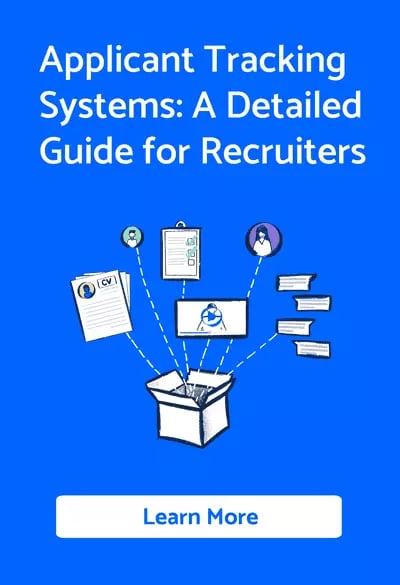Building a Software as a Service (SaaS) business is no small feat. You’ve got the product, the team, and a growing customer base, but now you’re looking to attract investment to fuel the next stage of growth. Investors are increasingly keen on SaaS businesses due to their scalable revenue models and potential for high margins, but securing investment is about more than just having a great product.
In this article, we’ll dive into the key factors investors look for when evaluating SaaS businesses. From customer retention rates to scalable infrastructure, understanding these critical elements will help you position your business for investment success.
1. SaaS metrics: The numbers investors care about
Investors are typically drawn to metrics that demonstrate a SaaS business’s ability to grow, retain customers, and generate recurring revenue. But not just any numbers will do. There are key performance indicators (KPIs) that are absolutely crucial in the SaaS world.
a. Monthly recurring revenue (MRR) and annual recurring revenue (ARR)
At the heart of any SaaS business is recurring revenue. Investors want to see consistent, predictable revenue streams that will grow over time. For SaaS businesses, the focus is on Monthly Recurring Revenue (MRR) and Annual Recurring Revenue (ARR). According to SaaS Mag, 76% of SaaS businesses that achieve sustained growth prioritise MRR from the outset.
ARR is particularly critical for SaaS businesses targeting enterprise customers or subscription models. This not only provides a stable cash flow but also reduces reliance on one-off sales, giving your business a financial edge that appeals to potential investors.
b. Customer acquisition cost (CAC) and lifetime value (LTV)
Investors will scrutinise how much it costs you to acquire a customer (CAC) compared to the lifetime value (LTV) of that customer. In a healthy SaaS business, the LTV to CAC ratio should be at least 3:1, meaning that for every pound you spend acquiring a customer, you’re generating three pounds in lifetime value. A higher ratio signals to investors that your business is not only growing but doing so efficiently.
The reason this matters? It’s a clear indicator of profitability and long-term sustainability. Check out this guide to understand how SaaS businesses use smart metrics for growth.
c. Churn rate: How sticky is your product?
Churn rate, the percentage of customers who cancel their subscription within a given period, is a key indicator of your product’s value to customers. A churn rate below 5% is generally considered good in the SaaS industry, although this can vary depending on your market. High churn signals to investors that there might be an issue with customer satisfaction, product-market fit, or competitive pressure.
Investors are particularly interested in churn because it affects the business’s ability to scale. After all, what’s the point of acquiring new customers if you can’t retain them?
2. Scalability: The backbone of any SaaS business
Scalability is one of the main attractions of SaaS businesses for investors. The ability to grow exponentially with minimal increases in cost is a dream scenario for any investor. However, demonstrating that your SaaS business can scale isn’t just about having a brilliant product—it’s about proving that your infrastructure, team, and strategy are built to handle significant growth.
a. Cloud infrastructure and flexibility
Modern SaaS businesses are built on cloud-based infrastructure, which allows them to scale rapidly. Investors want to know that your software is flexible and can easily adapt to new customers, increased usage, or even entirely new features. According to McKinsey, cloud-based companies grow revenue 53% faster than non-cloud businesses, and this is a point investors will weigh heavily.
b. Low marginal cost
One of the unique selling points of SaaS businesses is that once the product is built, the cost of serving additional customers is relatively low. Investors will want to see proof that your product can be delivered to hundreds, if not thousands, of new users without the need for significant additional resources. They’re particularly interested in businesses that can maintain high margins while scaling.
c. Team scalability
It’s not just about the tech. Investors will look closely at whether your team can scale with the business. Do you have the right leadership in place? Are your teams structured for rapid growth? Can your HR processes support onboarding a large number of new employees in a short period? This article dives deeper into scaling both infrastructure and teams.
3. Product-market fit and competitive advantage
Investors want to know that your product solves a real problem and does so better than your competitors. Product-market fit is a major indicator of this, showing that your product has found its place in the market and is attracting customers who are willing to pay for it.
a. Addressing a clear pain point
Does your product solve a clear pain point for your target audience? Investors are particularly keen on businesses that offer a unique solution to a widespread problem. For instance, the SaaS market has grown 30% annually over the last five years, but not every product succeeds. Solutions that are deeply embedded in solving customer pain points stand a better chance of winning investors over.
b. Differentiation and defensibility
Your competitive advantage is key to demonstrating long-term potential. Whether it's unique features, a proprietary technology, or an innovative business model, investors want to see that your product can’t easily be replicated. How well does your product stand out in the crowded SaaS space? What’s stopping competitors from copying your success? These are essential questions that need answering.
c. Customer testimonials and case studies
One of the most effective ways to demonstrate product-market fit is through customer testimonials and case studies. If your customers are raving about how your SaaS has solved their problems, it’s a strong signal that your business is on the right track. Make sure to include real-world examples of how your product has added value to businesses, preferably in a similar sector to the one your potential investors operate in.
4. Customer retention and growth strategies
While acquiring new customers is important, retaining them is arguably even more crucial. Investors want to see that your business has a strategy in place to grow existing accounts and retain customers long-term.
a. Upselling and cross-selling
Investors will be keen to see that you’re maximising revenue from your existing customer base. Upselling and cross-selling are key strategies in SaaS. Offering new features, integrations, or higher-tier plans to your existing customers can significantly increase your revenue without the added cost of customer acquisition.
b. Customer success and support
A proactive customer success team can make all the difference in retaining customers. Investors will want to know how you’re supporting your users and ensuring that they get maximum value from your product. A strong customer success strategy often translates to lower churn rates, higher customer satisfaction, and increased customer lifetime value (LTV).
c. Expansion revenue
Expansion revenue—revenue generated from existing customers—is a key metric for SaaS businesses. High expansion revenue indicates that your product is not only sticky but growing in value over time for your customers. Investors love seeing a healthy expansion revenue figure, as it demonstrates that your product is integral to your customers' operations.





